Day 2 of a 3 day long weekend of Late Autumn Tours in North Norfolk today. It was a cloudy start, but it brightened up nicely and the brisk southerly wind was mild, coming all the way from North Africa! Another nice day to be out. We planned to spend the morning trying to catch up with some lingering rarities along the coast, and then head out for some more general birding in the afternoon.
As we made our way east along the coast road this morning, we stopped first by the duck pond at Salthouse. Down along Meadow Lane, the ‘Eastern’ Stonechat was hiding at first, down in the reeds in the ditch which runs along the side of the track. It was just visible from the gate when it perched up. Helpfully, it then flew out to the taller reeds out in the middle, along the channel straight out from the gate, where we could get a really good look at it in the scope.
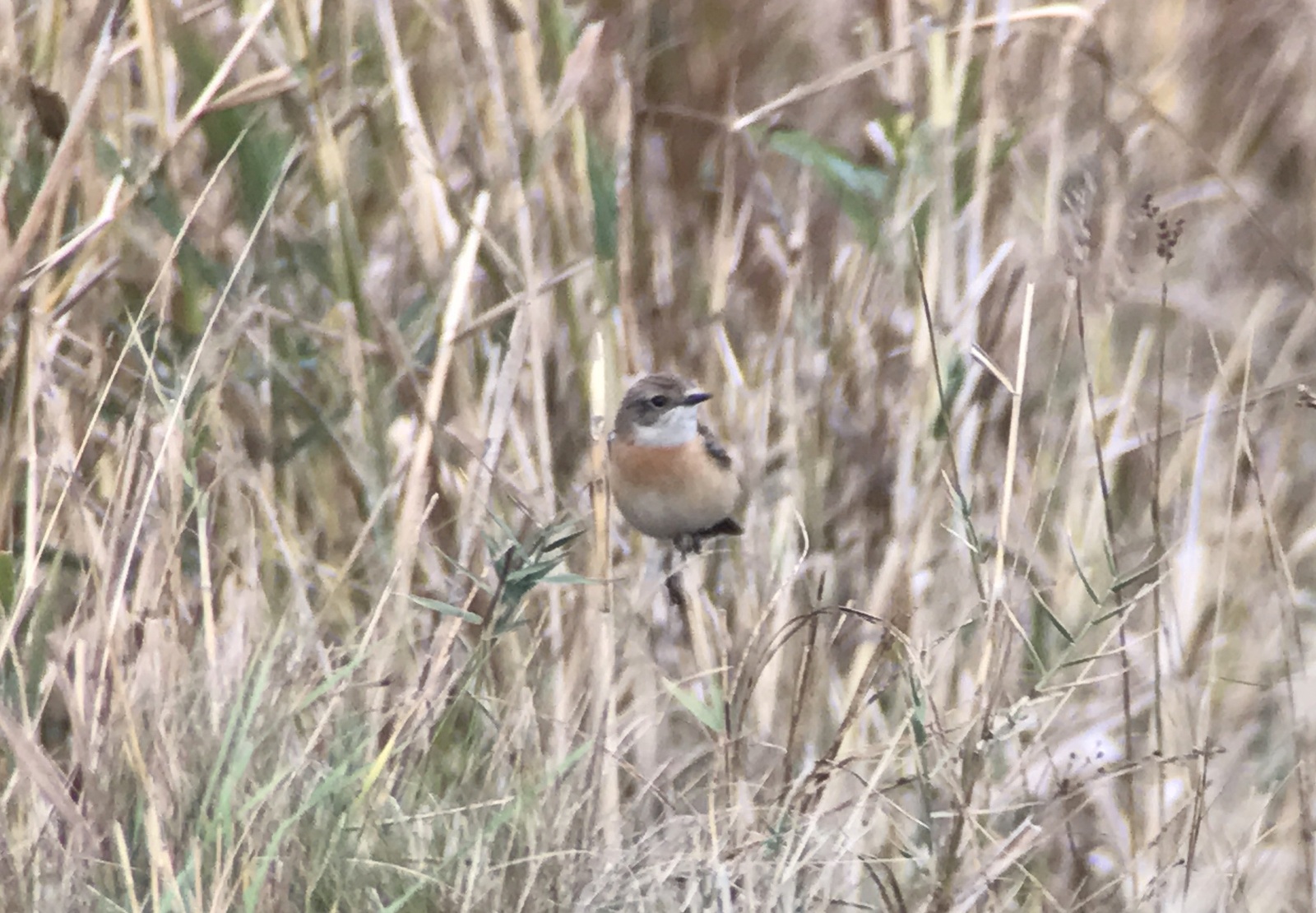
We could see its pale peachy orange breast contrasting with its white throat. When it flew, we could see its large, unstreaked, orange rump. At the time of writing, we are still waiting to hear back on its specific identity (which will hopefully be confirmed by DNA analysis!), although we know for sure it is one of the forms of ‘Eastern’ Stonechat.
The more easterly-breeding birds have been split out as a separate species, Stejneger’s Stonechat, which is what this bird is believed to be. However, the criteria for the separation of the two ‘Eastern’ Stonechats in the field are still largely untested so if this one isn’t Stejneger’s Stonechat, it will be back to the drawing board. Still, it is a really interesting bird to see whatever we end up calling it!
While we were watching the Stonechat, small flocks of Lapwing and Starling were passing west overhead, presumably more fresh arrivals from the continent coming in for the winter. A Sparrowhawk skimmed low over the grazing marsh and disappeared up across the field behind us, thankfully well away from the Stonechat.
Our next stop was at Sheringham. We parked at the Leas and made our way up along the coastal path to the Coastguard lookout on Skelding Hill. There were a couple of people already there who quickly put us on to the immature drake King Eider, which was out on the water. It was rather distant today, and diving constantly, but through the scope we got a good look at it. The distinctive bulbous frontal lobes on the base of its bill caught the morning light and shone bright orange.
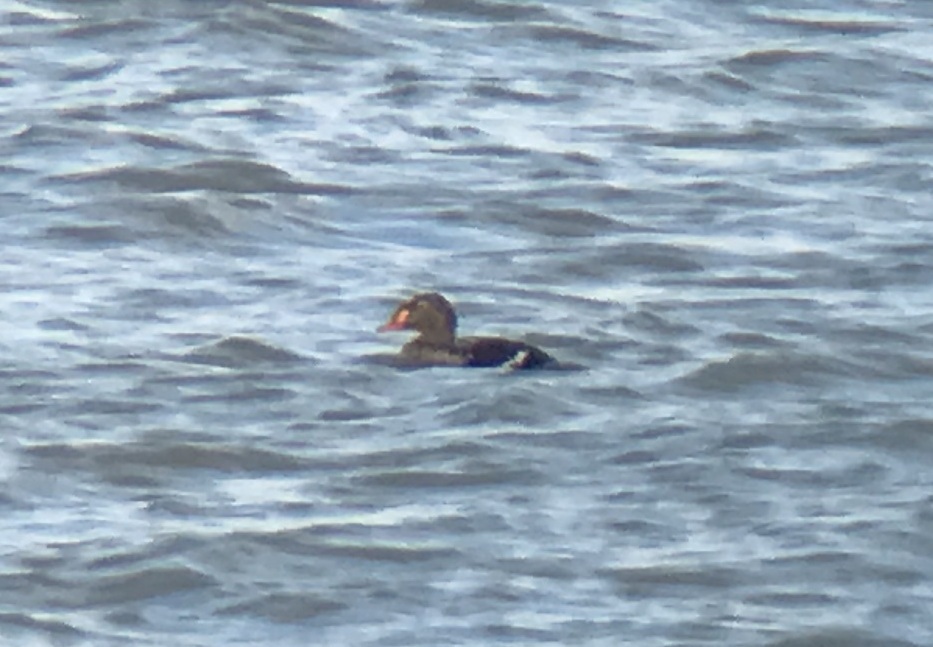
Scanning the sea from the clifftop, we could see a few Cormorants diving among the fishing buoys. One looked a little smaller and had a different profile – a squarer head with a steep forehead and a thinner bill, as well as a more contrasting white throat. It was a Shag, a 1st winter. Shags are not common here, so this was a nice bonus bird to see. A few Gannets were circling and plunge diving offshore too.
A small flock of Pink-footed Geese flew over calling, possibly birds on their way up from the Broads to North Norfolk, rather than fresh arrivals. A few Skylarks in off the sea were more likely just arriving here for the winter.

There has been a Richard’s Pipit lingering along the cliff top at Trimingham for the last few days, so we made our way along there next to see if we could find it. It had been reported already a couple of times this morning, but as we walked down along the path to the cliffs, we met a couple of people leaving who had not seen it for the last couple of hours. We carried on along the cliffs anyway – it was a lovely day now, and the view from here is stunning.

There were a few small flocks of Starlings coming in off the sea here too. We flushed a few Skylarks from the edge of the field as we walked past and a small group of Golden Plovers were hiding further out in the winter wheat. Looking over the edge of the cliffs, we could really see how the coastline is eroding here, with large areas below which had slipped down creating some substantial patches of undercliff. A Kestrel and a Meadow Pipit perched on one of the ridges.
When we got to the spot where the Richard’s Pipit had last been seen, there were a few people standing on the top of the cliffs looking, but there was still no further sign of it. It had been seen briefly in the long grass by the path but had then dropped over the cliff edge and disappeared. No one had seen which way it had gone, and it seemed like it had been roaming along a mile or more of the cliffs. We had a quick scan of the undercliff here, but it was like looking for a needle in a haystack. We didn’t want to waste too much time here, so we decided to walk back.
As we got to the path which cuts back across the fields to the road, we heard what sounded like a Rock or Water Pipit, but we were looking into the sun as it flew round. As we turned inland, a Water Pipit flew back over us. Two Common Buzzards drifted over from the small wood away to the east, passing right over our heads.
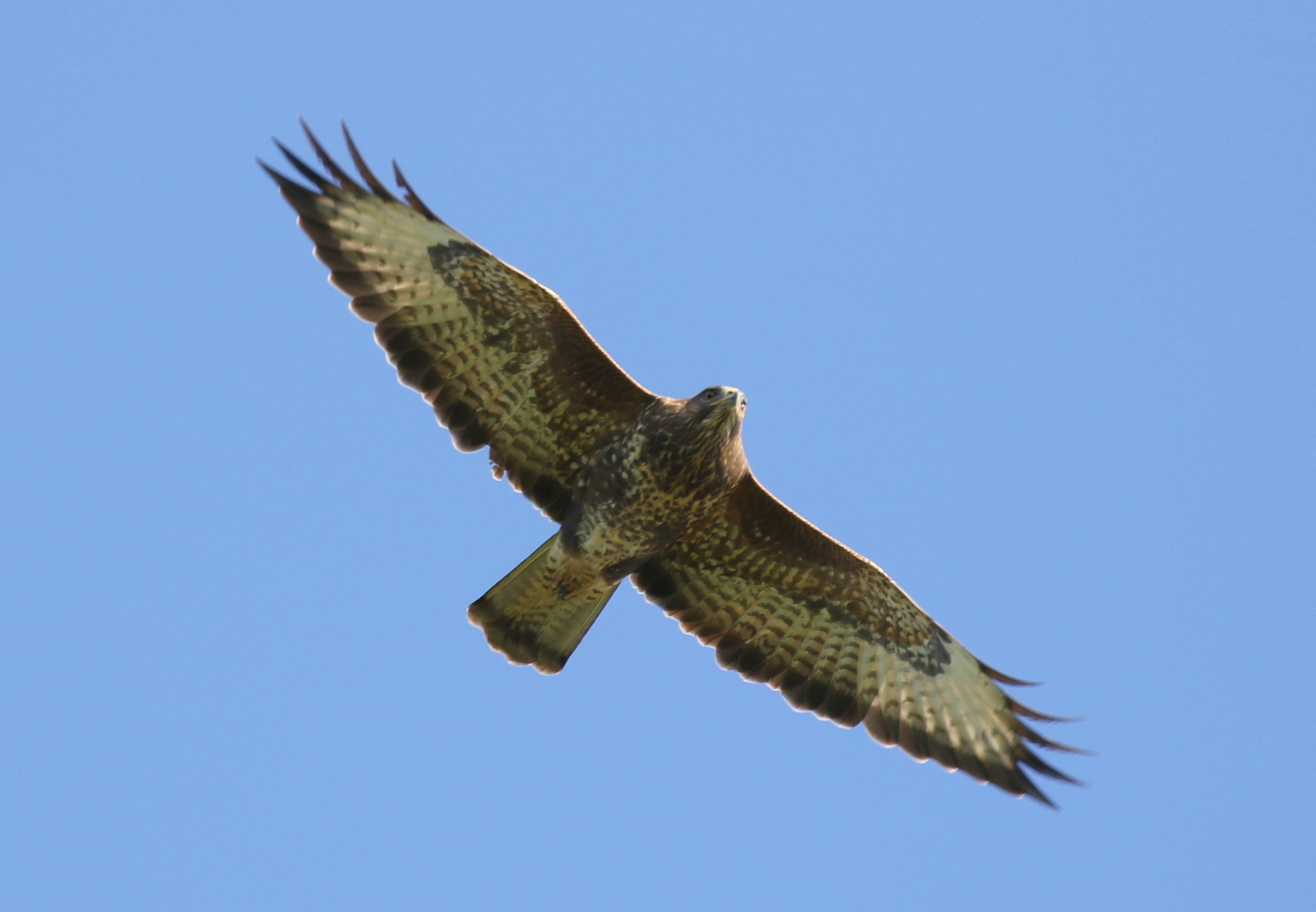
When we got back to Cley, we stopped for lunch at the picnic tables overlooking the reserve. A Marsh Harrier drifted over the scrapes, flushing all the gulls, ducks and a large group of Black-tailed Godwits. A lone Ruff flew over, heading inland presumably to feed in the fields. We could hear Pink-footed Geese calling from the field behind the Visitor Centre, and when something spooked them, they all flew round and landed again behind the hedge just to the east of us.
After lunch, we headed out up the East Bank. We could hear Bearded Tits calling from the reeds, but it was a bit too windy this afternoon for them to show themselves. A Marsh Harrier was hanging in the wind out over the reedbed.
Looking across to Pope’s Pool, we could see lots of Wigeon and Teal, together with a few Shoveler and one or two Gadwall. More Black-tailed Godwits were feeding along the back edge and several Cormorants were drying their wings on the island. More ducks were loafing in the grass around the Serpentine. When a noisy motorbike raced along the coast road, revving hard, everything spooked.
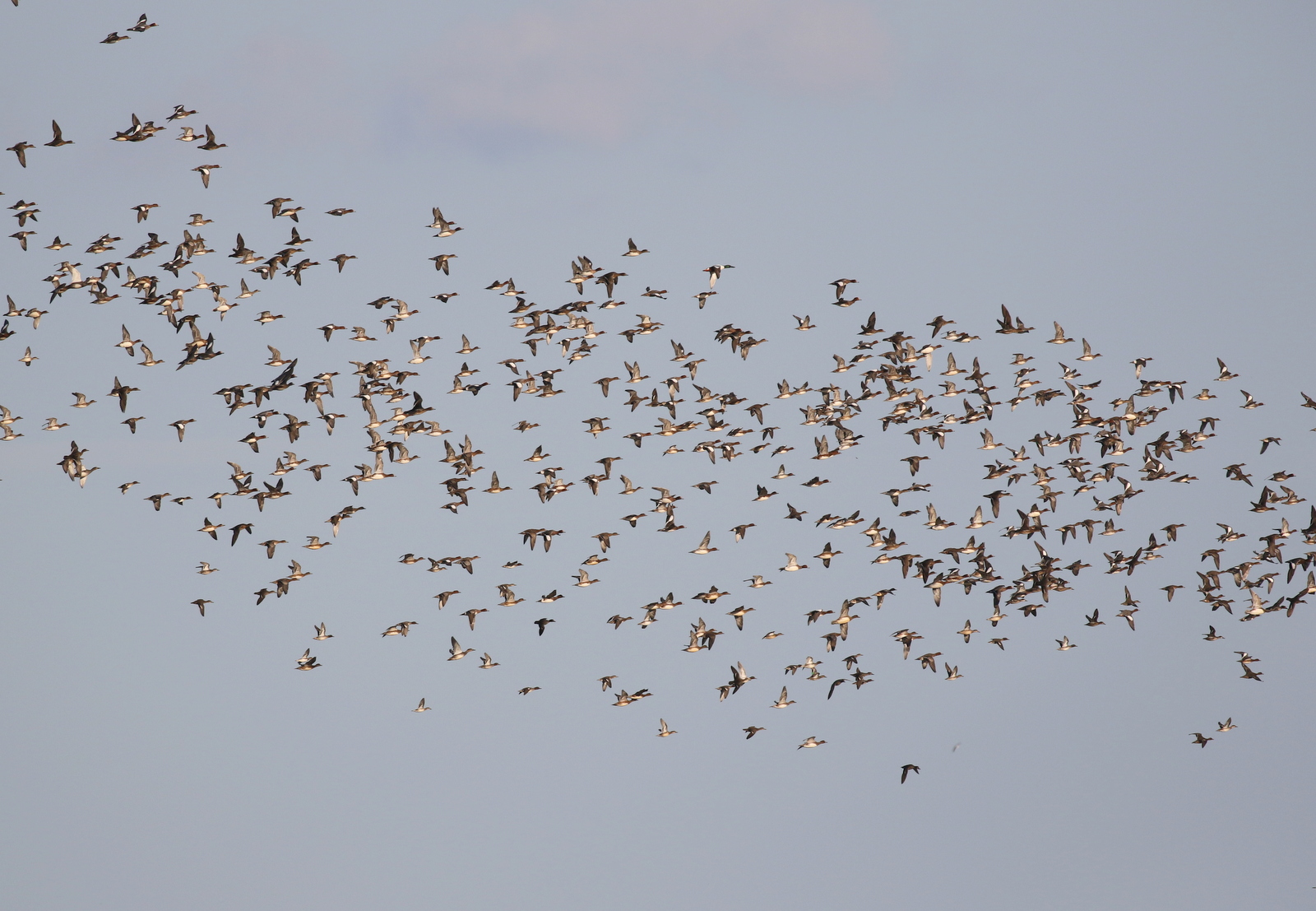
Looking down along the main drain, we could see several Little Grebes on the water. There were lots of waders on Arnold’s Marsh today, so we stood on the bank to go through them. There were more Black-tailed Godwits here, together with several Curlews and Redshanks. In amongst all the Dunlin, we found a single Knot. A Grey Plover and a Ringed Plover were feeding on the stony spits on the north side.
On the brackish pools opposite, a Little Egret was feeding just below the path, but flew up and landed again next to a Grey Heron further back.
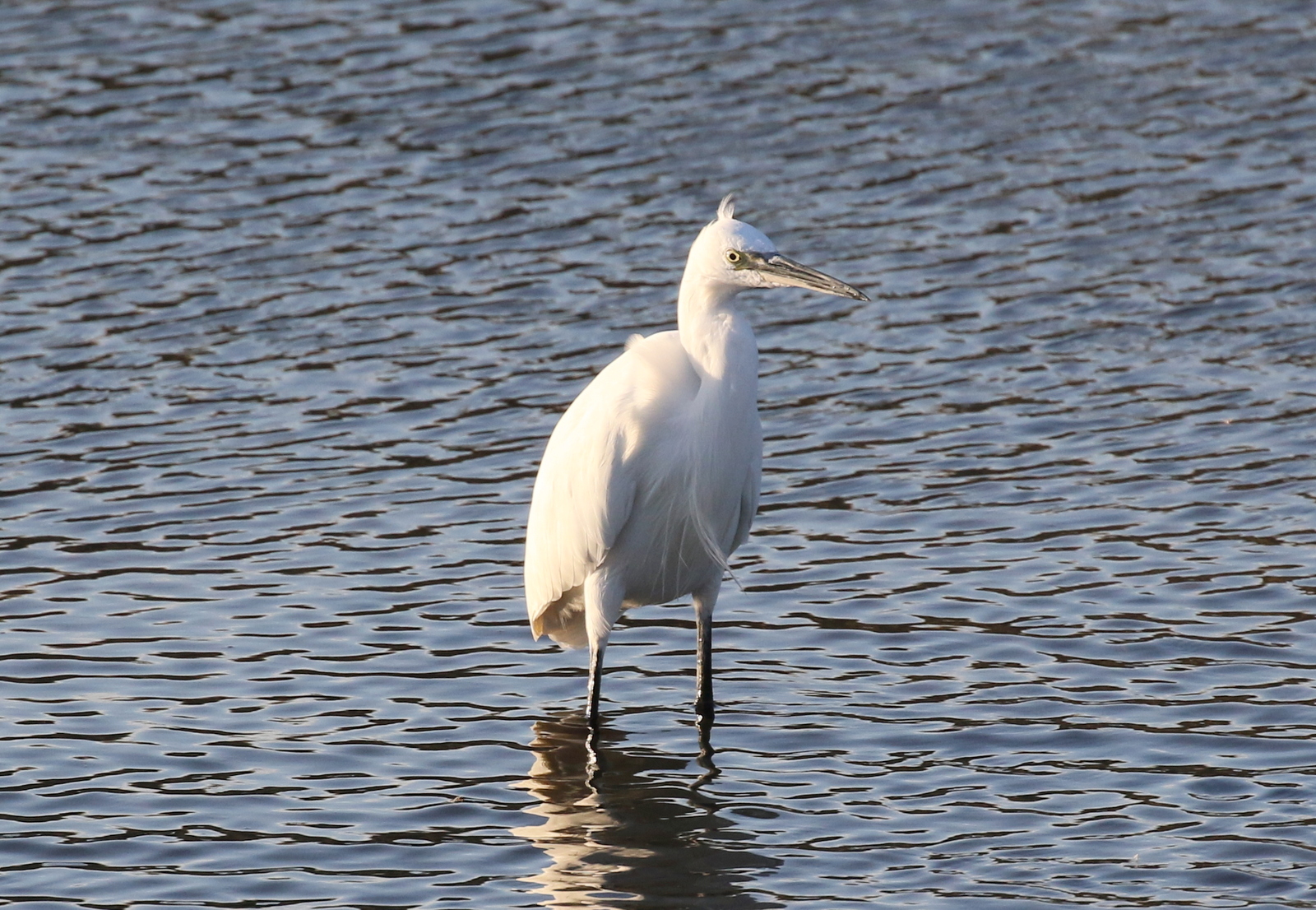
Out at the beach, the sea looked quiet at first glance. A couple of Grey Seals surfaced just offshore, watching some people gathered down on the shoreline. We could see one or two Gannets circling over the sea and then we found several Red-throated Divers and a single Razorbill on the water. Four Common Scoter flew past, but the highlight was a Great Skua which we picked up flying west offshore.
Back at the car, we headed west to Warham Greens. As we walked down the track, we flushed a few Blackbirds from the hedges but when we got to the paddock a large flock of Fieldfares flew up from the fields and landed in the bushes.
As we stopped to look at the Fieldfares, a harrier came up over the hedge beyond them. It was a ringtail Hen Harrier and as it dropped down low over the grass in front of the barn, we could see the white square at the base of its tail. It flew up over the hedge the other side and we walked over to the entrance to the field to find it quartering over the cover strip beyond.
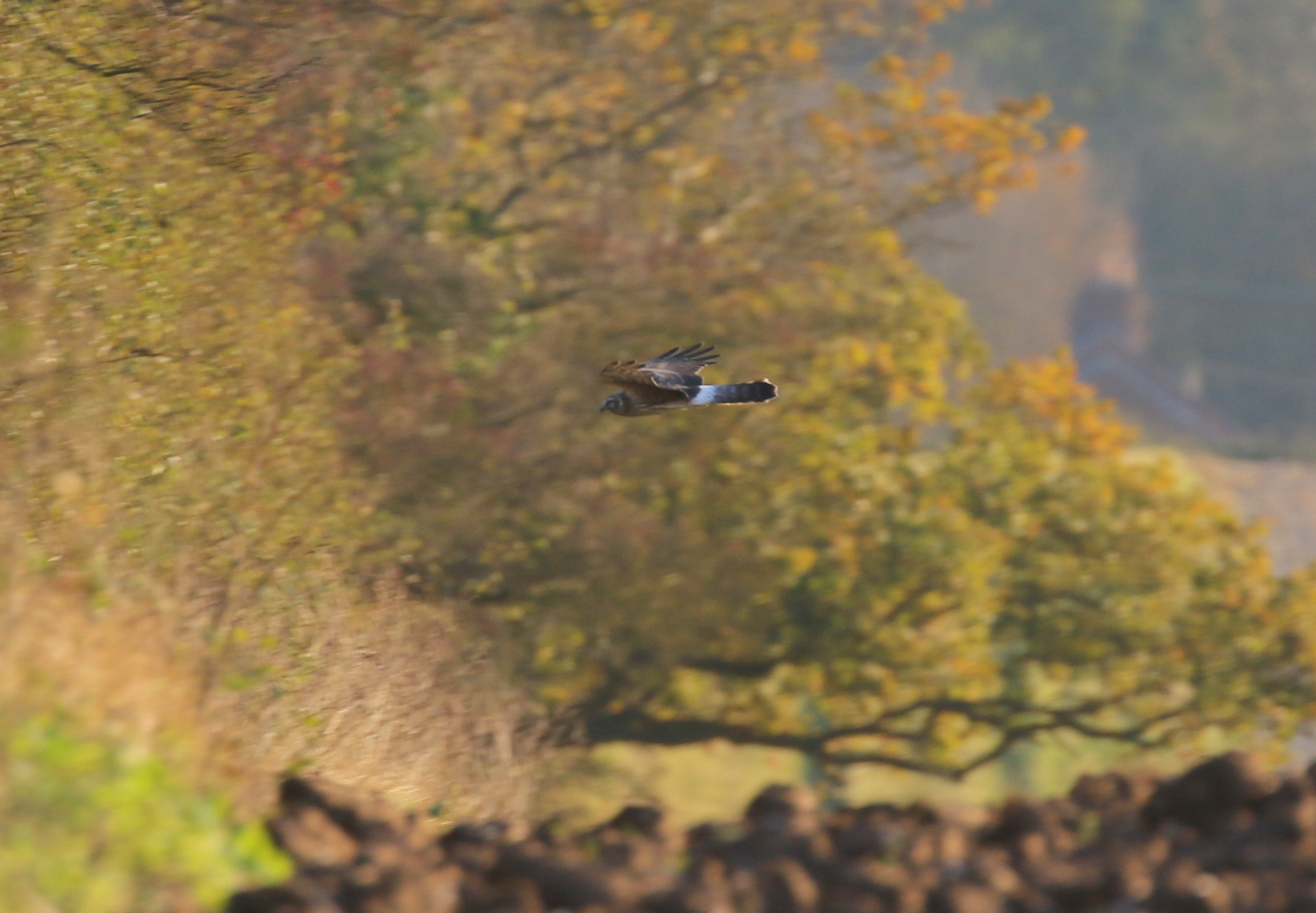
The Hen Harrier flew round past us and disappeared through the hedge by the track. We crossed over and watched it as it continued hunting, patrolling either side of the hedge which runs along the far side of the field the other side. There were several Brown Hares in the field, but they didn’t seem particularly concerned by the Hen Harrier just beyond them.
When the Hen Harrier disappeared from view, we continued on down the track. A flock of Curlews and Lapwings was feeding in the winter wheat in the next field. A Sparrowhawk flew low across in front of them and perched up in the hedge briefly.
As we arrived down on the edge of the saltmarsh, another ringtail Hen Harrier was patrolling distantly along the far edge, out towards the beach. There were little groups of Brent Geese, Little Egrets and Curlews scattered over the saltmarsh. Flocks of Starlings were making their way west, although it was hard to tell now whether these were more migrants arriving or local birds heading in to the town to roost.
A small party of Pink-footed Geese had already settled out on the beach beyond and more flew in to join them. Further skeins of Pink-footed Geese looked to be gathering in the fields just inland from us.
It was a good evening for watching raptors. A couple more ringtail Hen Harriers appeared and quartered the saltmarsh, one coming quite a bit closer to us at one point. A ghostly grey male Hen Harrier flew in from the east, along the back edge of the saltmarsh, and shortly after a second male flew in too. A Common Buzzard flew back and forth. A rather dark looking young Peregrine flew in over the beach and tussled with a Marsh Harrier briefly, before flying off towards Wells. A male Merlin appeared on one of the posts out on the saltmarsh and perched preening in the last of the evening’s light.
It was a great way to end the day, but dusk was drawing in fast now, so we decided to head back to the car before it got dark.
















